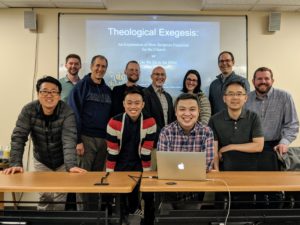
How do you determine your next move?
One of the values of reading sermons is that you are able to learn something you can’t from a good commentary: how a pastor/theologian creates their rhetorical strategy.
Along with obvious exegetical/theological developments, sermons contain evidence of rhetorical strategy. Preachers show you how they logically move from minute to minute, major/minor point to point, or move to move.
For instance, in Edwards’s third recorded sermon in Kimnach’s volume 10 (The Works of Jonathan Edwards), Wicked Men’s Slavery To Sin (based on John 8:34), Edwards states the obvious doctrine: “Wicked men are servants and slaves to sin.” The verse says that much. But his opening move is labled:
“[Query] I. How does it appear that wicked men are servants and slaves to sin? Perhaps you may think with yourself, ‘I don’t see but that wicked men are happy, and live as free as the best men in the world.’ Or it may be you may object in your mind that you are very wicked yourself…” (p. 340)
As you can see, Edwards anticipates the response of his listeners, something Buttrick called, a contrapuntal. He expects pushback from his listeners right from the start. So before he does anything, he wants to make sure everyone knows that this verse/doctrine is reality.
You may have also noted that Edwards is acutely aware he is addressing some wicked people and this means anticipating their response.
I am more geared to filling message minutes with exegetical data, but Edwards aims at proving God’s Word to be true. He develops three proofs for this first Query, the last of which is:
“Thus, if sin requires them to steal, swear, defraud, or commit fornication, it is done; if sin command them to do that which tends to their own ruin and destruction, it is done” (p. 342)
In order to preach like this, Edwards must know what God says elsewhere in His Word about this subject matter (i.e., the ability to cross-reference in a way that develops his argument). Even before that, he has been trained to think in the direction of what I’m calling for now, extra-exegetical insights.
Before Sunday, you might explore places in your sermon where your listeners may not all be on board yet and need some coaxing.
And may our Lord receive glory in the church and in Christ Jesus (Ephesians 3:21) through your efforts.
Randal












